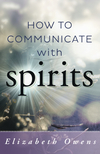Fragrances to Assist Spirit Perception

Fragrance—whether through the use of herbal scents, oils, incense, or potpourri—is one of the most effective means of altering consciousness and facilitating spirit contact in meditation. Fragrances alter the vibrational rate of the environment and the individual according to their unique properties. Spirit Guides are drawn to particular scents. At the same time, fragrances may enhance our inner perception of spirit guide activity around us.
Apple Blossom
This fragrance is beneficial for connecting with nature spirits. It is especially effective for those wishing to work with guides who use mythic images. Unicorns are drawn to the Apple Blossom.
Carnation
Carnation is a fragrance that may provide protection against spirit beings, especially the discarnate. It was worn during Elizabethan times to prevent encounters with ghosts.
Camomile
Devic orders associated with Egypt and Arabia are drawn to Camomile. This fragrance may help you attune to the nature kingdom. It balances the aura so that spirit perception is facilitated.
Frankincense
This fragrance is cleansing to the aura and to the environment. Its high vibration prevents intrusion by unwanted or lower level spirits. It is protective and cleansing, and it enhances greater perception.
Gardenia
Nature spirits are extremely drawn to Gardenia. It stimulates telepathy with the spirit realm. It can be used in rituals to draw good spirits.
Lavender
This is an herb that eases stress and facilitates altered states of consciousness. In the past, it has been carried or worn by individuals to see ghosts and spirits and to stimulate greater awareness of their presence. It stimulates higher vision, and it may be used to connect with various devic orders.
Lemon
Good spirits are drawn to the lemon scent. It was often used by old time mediums during séances to attract high vibrations and the higher spirit guides. It also assists in discrimination when working with the spirit kingdoms.
Lilac
Lilac is one of the most beneficial fragrances for connecting with the spirit realm. It helps stimulate physical vision of the subtle realms, and it draws good spirits to the individual. Certain orders of fairies are very drawn to lilac. The leaves may be used to cleanse haunted houses. It stimulates higher forms of clairvoyance.
Rose
Spirit guides of love and joy are drawn to us when the scent of a rose is present. It may be used in spirit meditation to open connections with guides that assist in divination and increased psychic ability.
Rosemary
This herb, and its fragrance, is sacred to the elf kingdom. It is still used at Christmas by some people in England. Traditionally, rosemary was used in England as a token to elves and other good spirits for their assistance throughout the year. It is very protective in its energy and guards the individual against negative entities. When used as oil in a bath it increases the body's sensitivity to the spirit kingdom.
Violet
Violet is the flower of the fairy queen. All nature spirits are drawn to this fragrance—therefore, it may be used to awaken greater telepathy and communication with them. Anointing the forehead with a drop prior to meditation is effective for activating greater awareness of these spirits.
Wisteria
This fragrance has been used by occultists, metaphysicians, and healers to attract good spirits and specific guides for their individual situations. It may bring you closer to those guides who will serve as creative sources of inspiration and those who will assist in developing healing energy.
Excerpted from How to Meet and Work with Spirit Guides, by Ted Andrews

About Ted Andrews
Related Products



is subject to certain Terms and Conditions